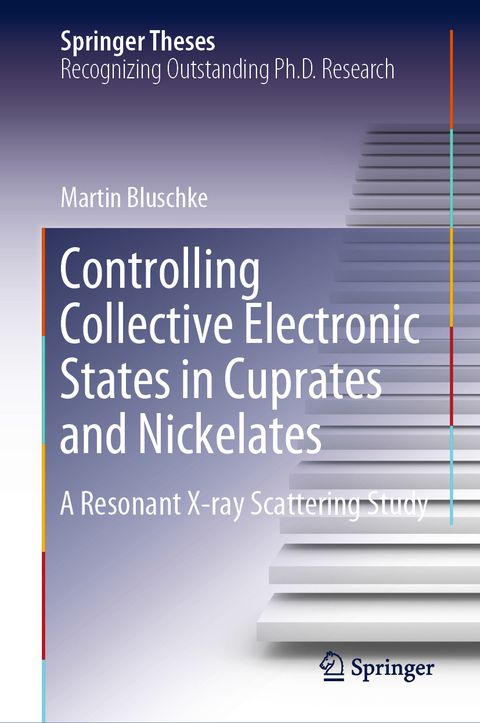
Controlling Collective Electronic States in Cuprates and Nickelates
Springer International Publishing (Verlag)
978-3-030-47901-5 (ISBN)
Martin Bluschke graduated from the B.Sc. Honours Physics program at the University of British Columbia in 2012, and went on to do research (2013-2019) in the Department of Solid State Spectroscopy led by Prof. Bernhard Keimer at the Max-Planck-Institute for Solid State Research in Stuttgart. During this time Martin enjoyed the priviledge of a guest status at the BESSY II synchrotron of the Helmholtz-Zentrum-Berlin where the majority of his experiments were performed. He received his Masters degree from the University of Stuttgart, and his Doctorate from the Technical University of Berlin with the highest distinction (summa cum laude).
Introduction.- Resonant X-Ray Scattering.- Introduction to Charge Order in the Cuprates.- Charge Order in (CaxLa1-x)(Ba1.75-xLa0.25+x)Cu3Oy Single Crystals.- Charge Order in YBa2Cu3O6+x Thin Flms.- Introduction to Antiferromagnetism in Ultrathin Nickelate Layers.- Coupling Between 3d and 4f Spin Sublattices in LaNiO3-Based Heterostructures.- Closing Statement.
| Erscheinungsdatum | 30.07.2020 |
|---|---|
| Reihe/Serie | Springer Theses |
| Zusatzinfo | XXVI, 151 p. 90 illus., 73 illus. in color. |
| Verlagsort | Cham |
| Sprache | englisch |
| Maße | 155 x 235 mm |
| Gewicht | 442 g |
| Themenwelt | Naturwissenschaften ► Physik / Astronomie ► Atom- / Kern- / Molekularphysik |
| Naturwissenschaften ► Physik / Astronomie ► Festkörperphysik | |
| Naturwissenschaften ► Physik / Astronomie ► Thermodynamik | |
| Schlagworte | Artificial Antiferromagnetic Networks • Charge Density Wave in the Cuprates • Controlling Collective States • Field Control of Antiferromagnetic Spin Orientatio • Field Control of Antiferromagnetic Spin Orientation • Nickelate Based Heterostuctures • Rare-earth Using Magnetic Anisotropy • Resonant X-Ray Scattering From Transition Metal Co • Resonant X-Ray Scattering From Transition Metal Compounds • Three-Dimensional Charge Density Wave Order in YBC • Three-Dimensional Charge Density Wave Order in YBCO |
| ISBN-10 | 3-030-47901-3 / 3030479013 |
| ISBN-13 | 978-3-030-47901-5 / 9783030479015 |
| Zustand | Neuware |
| Haben Sie eine Frage zum Produkt? |
aus dem Bereich


